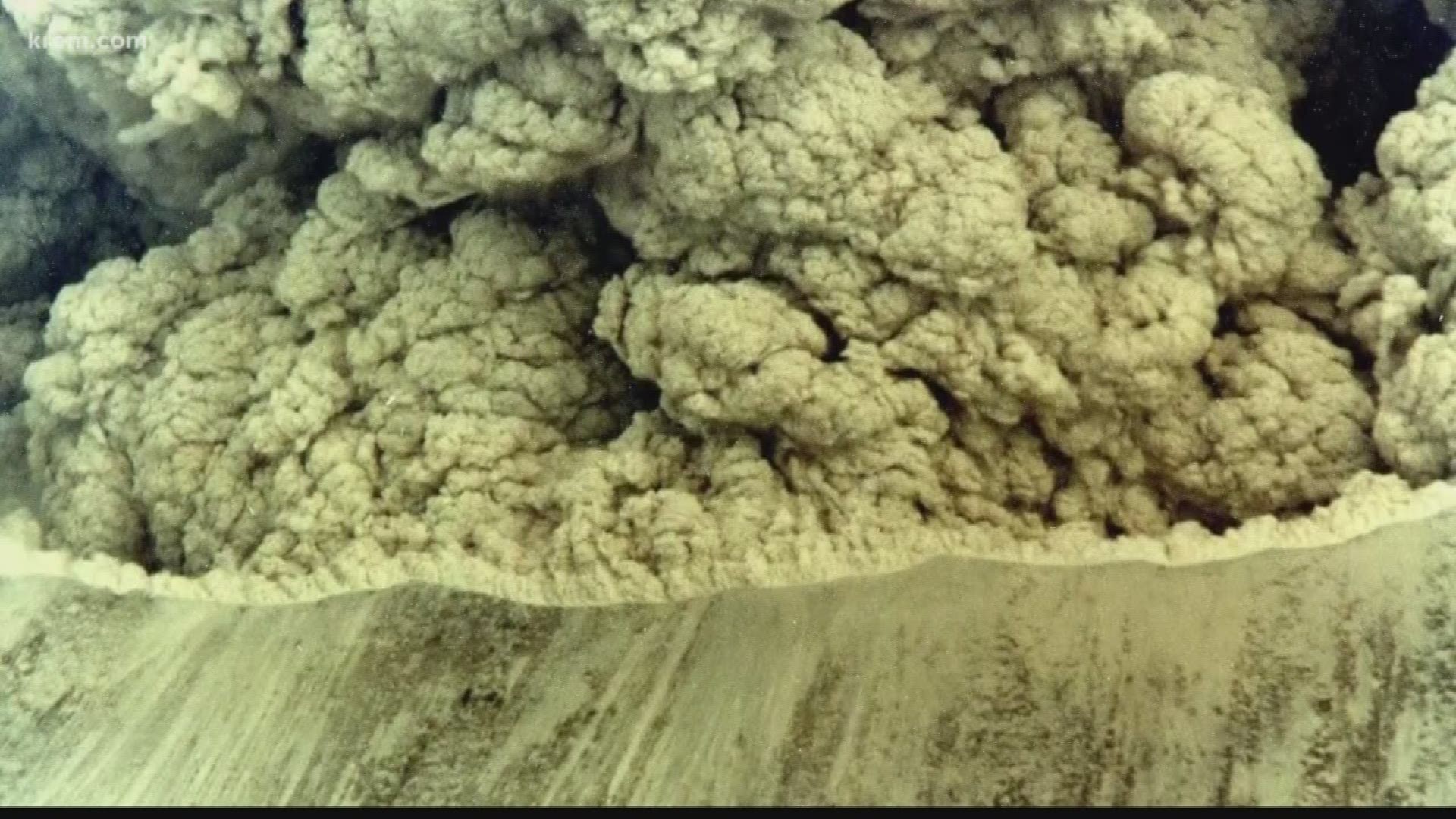SPOKANE, Wash. — Mount St. Helens erupted 40 years ago, on May 18, 1980, sending a plume of ash and smoke into the sky and claiming 57 lives on the ground.
But for months leading up the massive eruption, the mountain slowly came to life.
March 16, 1980: 100 earthquakes are recorded in one week. This is considered the first sign of activity before the May 18, 1980 eruption. A former U.S. Forest Service worker remembers these earthquakes occurring in unusual places on the mountain.
March 27, 1980: The first eruption in over 100 years occurs on the mountain. According to the University of Washington, steam explosions create a 250-foot wide crater.
March 28 – April 3, 1980: Smaller eruptions start to happen and explosions continue. Plumes of steam and ash reach 20,000 feet and the crater grows to about 1,300 feet in diameter.
April 8, 1980: A series of explosions lasts for four hours, the longest since the mountain had come back to life.
April 22, 1980: Eruptions slow from about one per hour in March to about 1 per day by late April.
Small eruptions continue, as do the earthquakes. According to the University of Washington, in this time on the north flank of the mountain, a bulge begins forming, growing some 6 feet a day. This is due to the magma rising high into the volcano.
May 13, 1980: Officials meet to discuss opening access. Scientists point to hazard map and say red/blue zones don’t acknowledge miles of real hazards. But the plan moves forward to reconsider boundaries.
May 18, 1980, 8:32 a.m.: A 5.1 magnitude earthquake strikes and causes the largest debris avalanche ever recorded. The volcano erupts in an outward fashion. Eruptions blast through the landslide, accelerating debris to over 300 mph.
Geologists and Spokane residents Dorothy and Keith Stoffel had chartered a Cessna flight over Mount St. Helens. As their plane flew overhead, the mountain began rumbling and suddenly erupted. Believed to have been the closest to the mountain during the time of the eruption, Keith Stoffel managed to capture the moments before and after the blast on film.
Within 15 minutes of the eruption, smoke and ash rise 15 miles into the air. The eruption devastates an area of approximately 370 miles. In the inner zone of the eruption, which extends for about 6 miles, there are virtually no trees left, only scorched earth.
May 18, 1980, 9:45 a.m.: Washington State Patrol has plane in the air. Chocolate wall of mud, boulders & logs plows down valley at 20 mph. Mudflow washes over banks, smashes buildings and bridges, and strips away trees, according to USGS.
May 18, 1980, 12 p.m.: Ash began to rain down on the small farming town of Lind, Washington, according to Washington State University.
One resident plunged a yardstick into the ash-blanketed ground the next afternoon. It measured six inches deep.
Though Yakima is 100 miles from the volcano and positioned directly in the drifting plume’s path, half as much ash landed there than in the Lind area, according to the U.S. Geological Service. Ephrata and Othello got three inches of ash.
The ash plume had also arrived in Spokane and Moscow, Idaho, by this time.
May 18, 1980, 3 p.m.: Ash plume is near Missoula, Montana, and beginning to spread south. Ash in the skies leads to total darkness in the Spokane area.
May 18, 1980, 6 p.m.: Ash plume reached area east of Pocatello, Idaho.
May 21, 1980: President Jimmy Carter declared the state of Washington a “major disaster area” due to the eruption of Mount St. Helens.
May 22, 1980: Carter visits Portland. He flies in Marine One to Kelso for a visit before helicoptering back to Portland, and then flying to Spokane on Air Force One.
"Of course, east of the explosion is where the dust has settled and this is a very troubling problem for us," President Carter said during his visit to Spokane. "The area of Ritzville and 40-mile radius around that was the heaviest concentration of this fallout material. It's 3 to 5 inches deep, transportation is still obstructed in that area. And of course here in spokane, there was about a half-inch on the ground."
Between 1980 and 1986 smaller eruptions would occur at Mount St. Helens, causing some ash to blow, but nothing as significant as what occurred on May 18, 1980.
In 2004 there was a reawakening of Mount St. Helens. It erupted slowly over 3 and a half years, pumping lava into the crater it had created in 1980.
In the 40 years since the eruption, the mountain has largely recuperated. It continues to be studied to help scientists understand more about volcanoes and eruptions.

